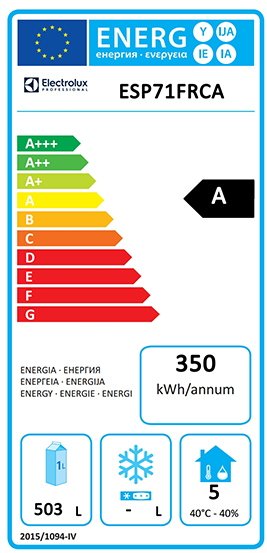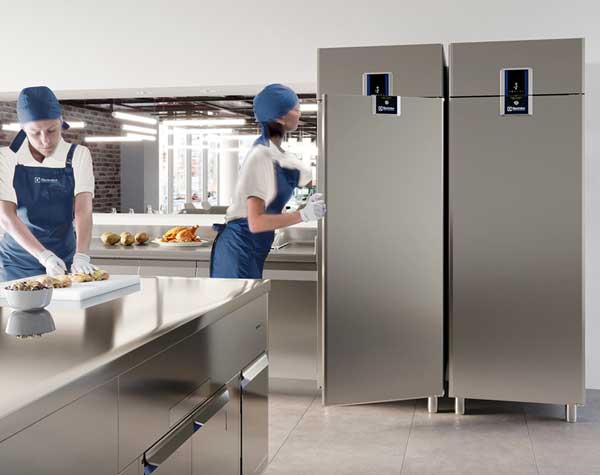Originally developed in 1994, the EU energy label has long helped manufacturers easily identify the energy efficiency of their appliances and enabled end-users to make an informed purchase. While originally launched for the domestic market, 2016 saw the introduction of the first energy label directive for professional catering equipment, including commercial refrigeration.
What is an energy label?
In short, it is a label that appears on both the product and its packaging which displays important information about the energy efficiency of the appliance. The requirements for commercial refrigeration appliances are based on those set out in EU Energy Labelling Directive, which forms part of the European Ecodesign Directive, and cover:
How to read commercial refrigerator energy labels?
The EU energy label for commercial refrigeration devices displays all the necessary information catering professionals need to determine the energy efficiency of the product in question.
In addition to the product reference and manufacturer details, the label includes the:
- Energy class
- Annual energy consumption
- Net storage capacity
- Climate class
A key differentiator between domestic and commercial refrigeration appliances is the fact that domestic energy labels detail the noise (dB). It goes without saying, but a domestic appliance should never be used in a professional environment. Doing is likely to not only void the warranty, but increase both running costs and likelihood of product failure.

Energy classes for electrical appliances
The energy class is the overarching indicator of an appliance’s energy efficiency. Under the EU energy label, commercial refrigeration units are rated from A+++ to G, based on their Minimum Energy Performance Standards (MEPS). A+++ is the most efficient, and G the least.
Annual Energy consumption (kWh/annum)
The EU energy label also clearly states the expected annual energy consumption of the unit. This data can then be used to help operators calculate the projected running costs by multiplying the kWh by the unit cost.
Storage Capacity
Another important metric on the EU energy label is the maximum capacity – or net volume (L) – of the appliance. Overloading a commercial refrigerator can result in poor airflow around the produce stored within, potentially causing it to spoil earlier. As such, operators must ensure they invest in commercial refrigeration with enough capacity to store the contents safely and efficiently. Electrolux Professional’s ecostore refrigerated cabinets and freezers, for example, can offer an average of 50 litres more capacity than other models with a comparable footprint thanks to their innovative design and position of the refrigeration unit.
Climate Class
The final key piece of information displayed on the EU energy label for commercial refrigeration is Climate Class. This determines the capability of the product to correctly preserve food in different working conditions. As professional kitchens can often reach high ambient operating temperatures, any commercial refrigeration units purchased should be built to either Climate Class 4 (‘light duty’: 30°C / 55% humidity) or Climate Class 5 (‘heavy duty’: 40°C / 40% humidity) to guarantee performance levels.
Conclusion
Ultimately, the EU energy label is an important tool for helping catering professionals make an informed choice when purchasing commercial refrigeration. Given refrigeration is usually switched on 24/7, finding the right unit can help keep running costs to a minimum and contribute to a profitable and sustainable catering operation.

